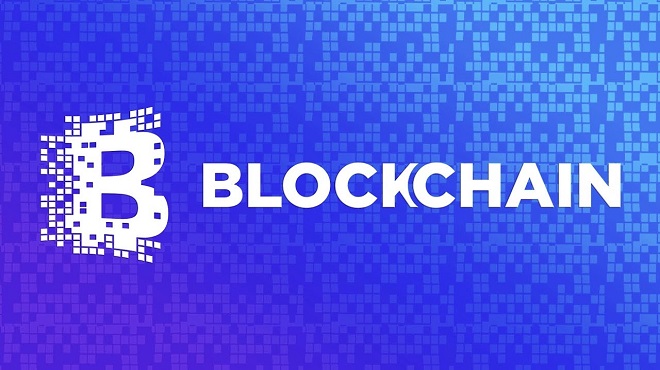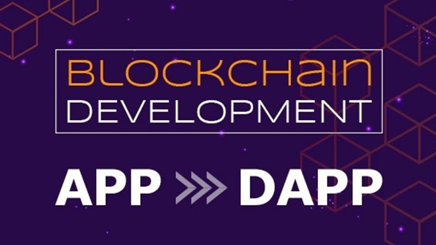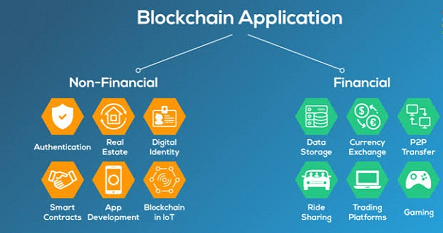

A Brief History
Since its release in 2008, the blockchain technology has gained unprecedented attention over the last decade, progressing it into one of today’s most promising inventions. Now, it’s almost impossible to discuss the early years of the blockchain technology without a mention of Bitcoin. The two were practically one and the same thing. Some people still think they are!
FT technology reporter Sally Davies quotes, “Blockchain is to Bitcoin, what the internet is to email. A big electronic system, on top of which you can build applications. Currency is just one.”
Indeed, as of 2014, developers and businesses started to realize that there was more to blockchain than met the eye. True to their expectations, entrepreneurs discovered the different types of operations this technology could apply to other than cryptocurrency. As you can almost guess, this only led to more investments.
Today, the blockchain technology has found useful and has been a real game-changer in industries ranging from healthcare, insurance, supply chains to contract management, transportation, voting, and more. Which leads us to our main topic on blockchain based Dapp development.

What is Blockchain based Dapp Development?
At its center, blockchain is a decentralized and open ledger upon which transactions between two groups are permanently recorded without third-party authentication. This ledger of records is organized in ‘blocks’ which are linked to each other by cryptographic validation.
The ledger’s decentralized location and lack of a management entity assure its distribution. When a transaction is added to the ledger, it cannot be reversed or deleted and remains in public display forever. Hence its resilience and transparency.
Dapps are simply open-source applications that make use of the blockchain technology.
The development of these applications is just starting to gain momentum as developers continue to figure out other ways of leveraging on the blockchain revolution. Here are some features to help you understand better the nature of these decentralized apps:
Decentralized- To avoid the hazards that come with storing a lot of things in one place, all records of the app’s activities are stored on a decentralized and public blockchain.
Open Source- Ideally, Dapps are self-governing which means that its code base is open for analysis. Any proposition to change the application has to be decided upon by a majority of its users.
Protocol- The same way that Bitcoin and Ethereum use proof of work (POW), the community responsible for the application must come up with a cryptographic algorithm to display proof of value.
Incentivized- You’ve probably come across cryptographic tokens- virtual incentives rewarded to the blockchain validators.
If you haven’t already wrapped your head around it, Bitcoin was the first ever Dapp to have been developed. The fact that blockchain and Bitcoin were mistaken for the same thing rests on the simple lack of another similar app at that time. Then there came Ethereum.
The Ethereum Network
The common goal behind the development of Dapps is to provide solutions to real-world problems. While this is still the primary goal, its developers had much bigger ideas in mind when they built Ethereum.
The whitepaper for the application clearly stated its intention to create another protocol for the development of decentralized applications with stress on development time, scaling, and security.
To facilitate its secondary goal, Ethereum developed its very own language, Solidity. This gave its specialists the ability to create smart contracts through the Ethereum Virtual Machine (EVM). With these tools, developers had what they needed to build Dapps with real-life applications ranging from resource planning to asset management. Successfully programmed Ethereum-based Dapps include Augur, Golem, and Melonport.
Kickstarting a Dapp Project
Create a Whitepaper
A whitepaper is generally a document that highlights a clear-cut solution to a problem. In this case, your whitepaper should include the goals and intentions for the blockchain based Dapp. Have a clear-lined plan for your application’s token distribution and how you intend to handle the whole thing.
Be sure to have in place a system for establishing consensus before you bring in your development and management teams. A fulfilling Dapp development project is one with clearly stated technical requirements and foreseen future difficulties.
Gain a Following
Transform your team into a community. You do this by discussing your plan for the project with your counterparts. A good community exchanges and values each other’s feedback.
“One such community that is embracing blockchain technology with a vengeance is carbon credits, which are seen as critical to solving climate change. The problem thus far with the carbon credit industry is a lack of transparency.
Carbon Collective co-founder, Zach Stein, is hopeful that blockchain technology will level the playing field. “Today’s world of carbon credit trading leaves a lot to be desired. Once blockchain is implemented more fully, it will be almost impossible for a corporation to hack or cheat the ledger,” said Stein.
And this is just one industry. Expect the coming years to have a similar effect on almost all of society.”
Commence a Crowd-sale
If you’ve followed the above two steps, the Dapp should pick up enough momentum to start receiving token funding. Include in its website all the information that may be of use to an investor and settle on a date for the activity.
Transform your ideas into reality
Commence development and keep your doors open to interested parties and new developers.
Initial Coin Offerings (ICOs)
An ICO is what you would call the birth of a new Dapp or member in simple blockchain language. This is a fundraising event based on token sales and an opportunity for daring investors to invest in a potentially profitable cause.
The startup team arbitrarily determines the token value, although it is open to corrections via the price dynamics, upon being put up on the exchange. The network participants, instead of the accredited agencies, eventually settle on the right value.
Initial coin offerings are a driving factor of innovation and interest as far as the blockchain technology is concerned. The platform creates an arena to display the well of possibilities that blockchain offers.
The basic steps when preparing to take part in ICOs are: remain updated> prepare your wallet> be on time> safe keep your tokens.
In case you’re not sure about investing in a certain ICO, it’s only wise to ask yourself these questions:
How safe are my investments?
What is the long-term plan?
Is this just another well-marketed project?
Do I have an exit plan?
Does this Dapp hold an exceptional advantage?
It is easy to encounter a capital loss, especially in today’s massively-hyped ICO scene. Best you conduct the necessary research before you settle on a particular Initial Coin Offering.
Advantages of Blockchain based Dapp Development
Resistance to failures- The distribution of ledgers within numerous nodes makes the system strong and more failure-resistant.
Immunity to network censorship- The lack of a central authority that anyone could approach and ask for data removal makes decentralized apps invulnerable to any interference.Trustworthiness- Perhaps in a world full of corrupt management, an application that is not run by any governing body suddenly appears like the most trustworthy option.

Here’s an example of a real-life case use of the blockchain technology on education…
The Holberton School, a software development school in San Francisco became the first learning institution in the world to carry out a blockchain operation when it created a Dapp to store its student’s individual data and hand over their diplomas.
The system has been designed to sign a diploma on creating it, after which it carries it over to the blockchain database. Despite the school providing the students with hard copies, the system shapes up a decentralized compensation number for each scholar, that future employers can perform a check on.
Now, isn’t this a much simpler way to weed out false CVs and fake certificates?
Closing Thoughts
In the not so distant future, the blockchain technology will become fully incorporated into the systems of the world and the adoption of decentralized apps will render a lot of practices obsolete.
Picture having your car operate on its own, transporting you to and from work. Or having your computer run your kitchen, preparing your desired choice of food after a long day’s work. The thought of living in such a world is mind-blowing yet consuming.
One thing is for sure though- blockchain based Dapps are the future. Large corporations rushing to get their piece of the pie in the blockchain crusade are a testimony to that.

© 2017 All rights reserved.